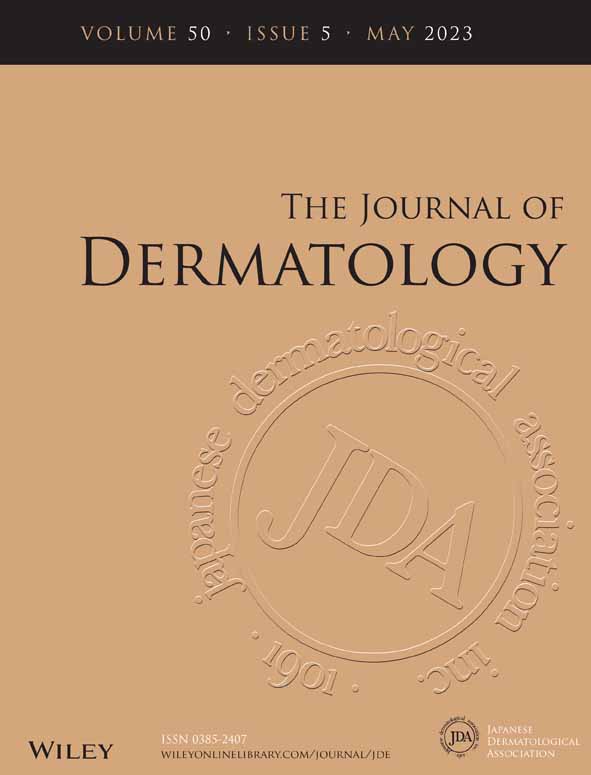An intronic splice-site variant in MBTPS2 underlies ichthyosis follicularis with atrichia and photophobia syndrome
Gand Chen and Mengwei Wang contributed equally to this work.
Abstract
Ichthyosis follicularis with atrichia and photophobia (IFAP) syndrome is a rare genodermatosis characterized by a classic triad of follicular ichthyosis, alopecia, and photophobia. We report a Chinese patient displaying features of IFAP triad along with painful palmoplantar keratoderma, recurrent infections, periorificial keratotic plaques, nail dystrophy, and pachyonychia. Whole-exome sequencing revealed an intronic variant (NM_015884.3: exon7:c.970+5G>A) in the gene MBTPS2. Sanger sequencing confirmed that the variant segerated with phenotype in the family. Sequencing of cDNAs derived from the patient indicated the variant introduced a new splice donor site, leading to partial skipping of exon 7 (r.951_970del). An in vitro mini-gene assay also revealed abnormal splicing of exon 7. This study presents a case complicated with X-linked IFAP syndrome and Olmsted syndrome, and highlights the significance of using validation assays to identify the pathogenicity of intronic variants in MBTPS2.
CONFLICT OF INTEREST
The authors have no conflicts of interest to declare.




